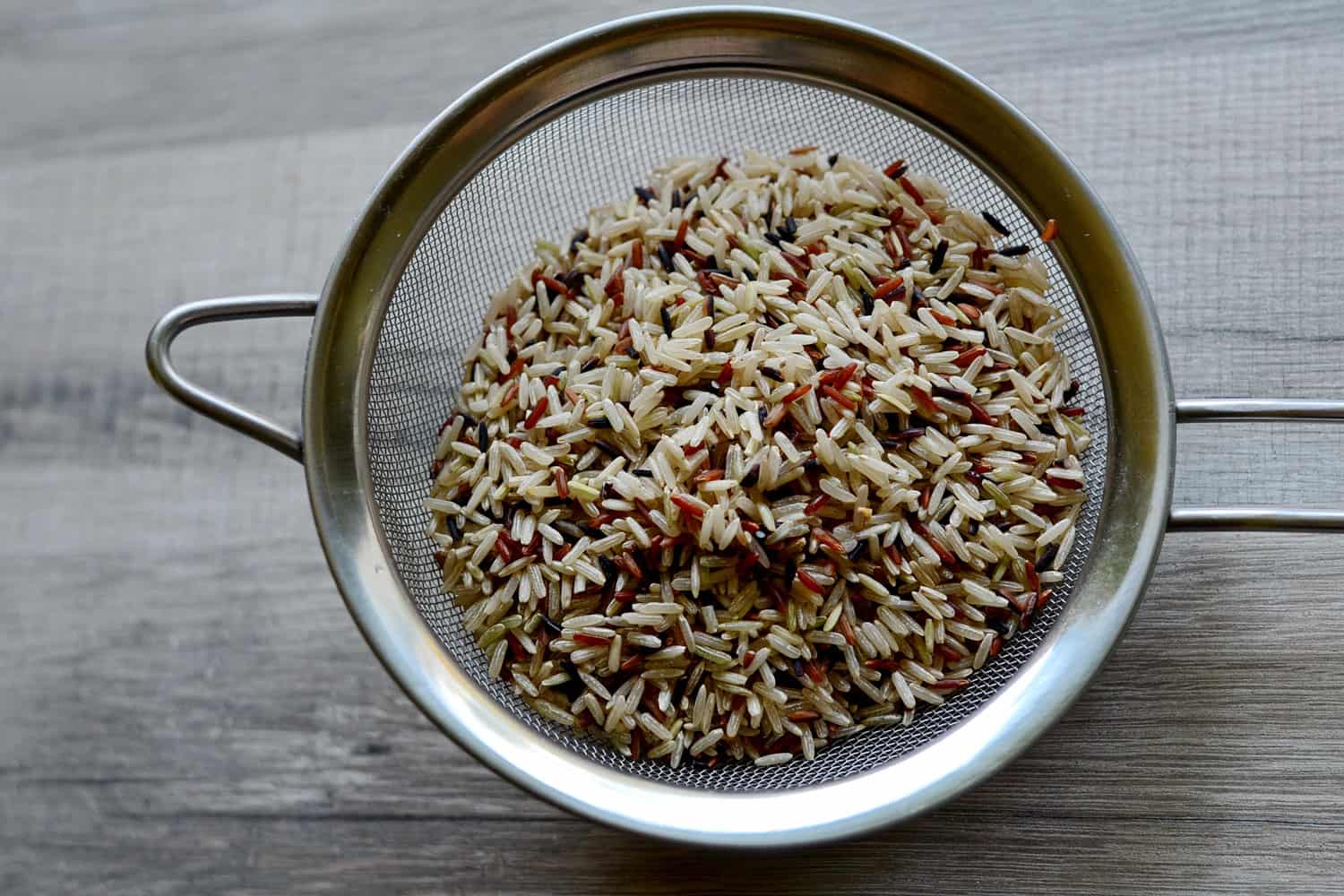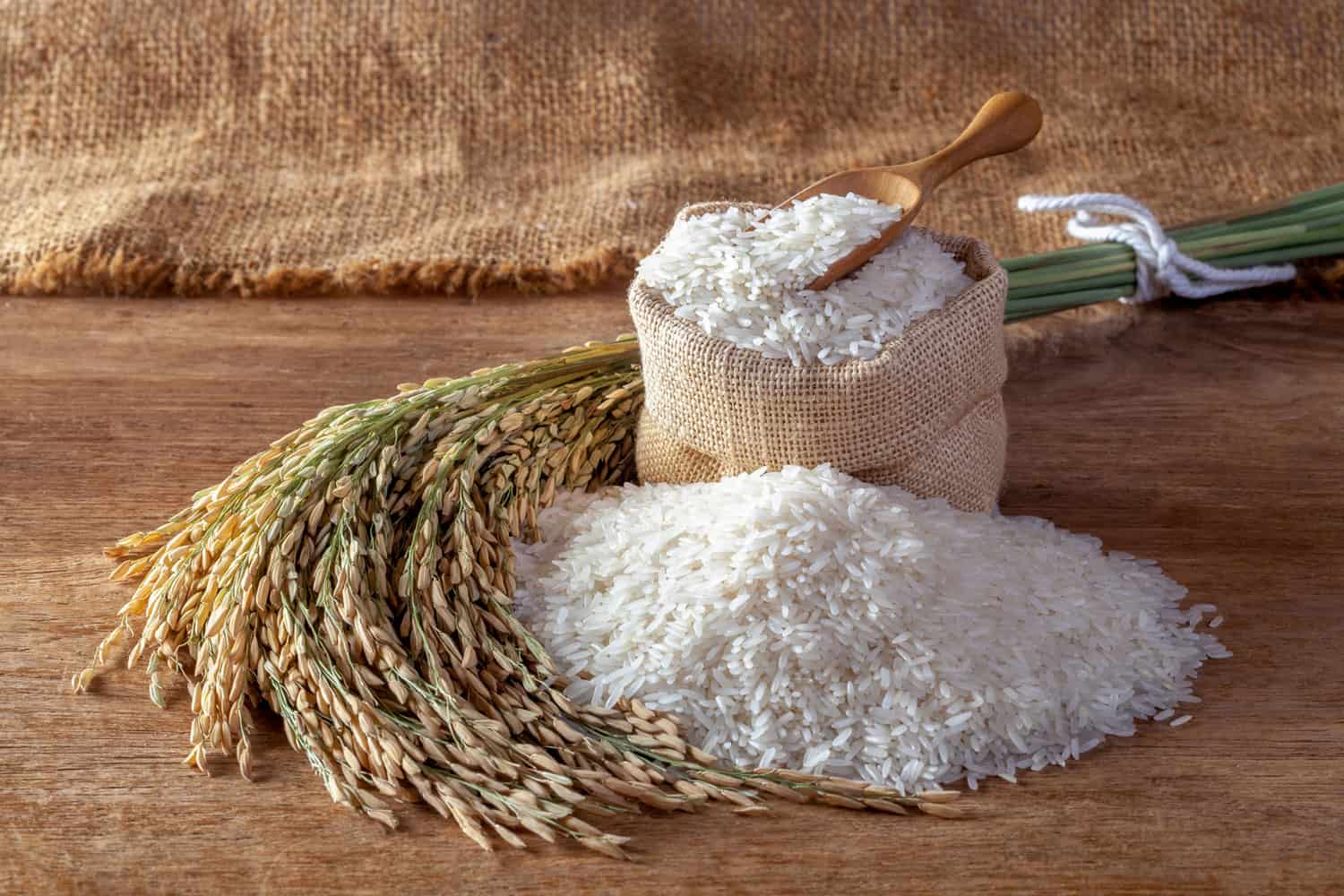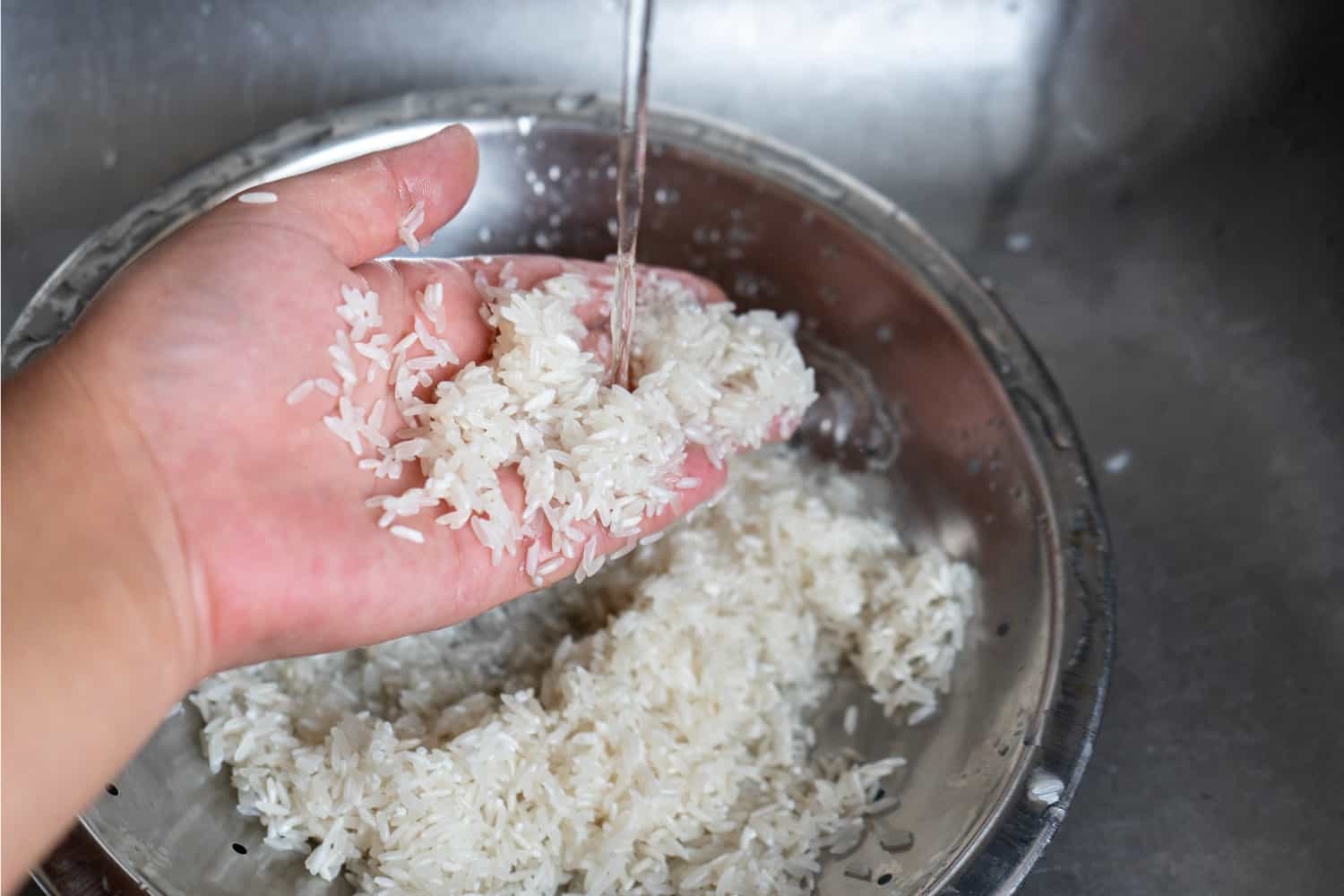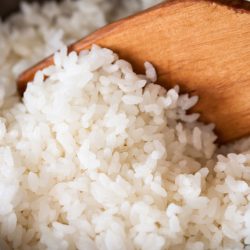Rice is a staple in many households. Not only is it one of the most versatile grains that you can cook with, but it's also fairly simple to prepare. But what is the best way to strain rice if you don't have a strainer? We've looked into the answer to this question, and in this post, we will solve it for you.
There are quite a few methods that you can use to strain rice without a strainer. Check them out below:
- Cheesecloth or Lewis bag
- The cooking pot's lid (or any lid)
- Coffee filters
- A large serving spoon
- A dishtowel
- Paper towels
As you can see, there are several methods that you can use to strain rice even if you don't have a strainer. The most important thing to remember is to exercise caution when using each method. Freshly-cooked rice is hot, and you don't want to spill scalding water during the process. Continue reading to learn more about how alternative methods to strain the rice.

6 Ways To Strain Rice Without A Strainer

1. Cheesecloth or Lewis Bag
If you have a cheesecloth or a Lewis bag hanging around your kitchen, you can use either of these to strain your rice. The cool thing about these materials is that they are porous and even finer than rice strainers. This means that you strain all of the water and most of the starch when using them to strain the rice.
The stretchy fabric on Lewis bags and cheesecloths can wrap around the top of your rice pot, allowing you to tip it over into the kitchen sink slowly.
It's best to make sure that your hands are covered with oven mitts or potholders so that you did not burn yourself. While it may take a bit longer for the water to strain through these cloths, they're just a bit as effective as a rice strainer. If you don't have either of these items, any mesh bag will work as well.
Click here to see this cheesecloth on Amazon.
2. The Cooking Pot's Lid (or any lid)
To keep things simple and quick, you can also use the cooking pot's lid to strain the rice. Any large pot lid will do, as long as it's big enough to cover the pot that you pour the rice from. To use this technique, place the lid against the top edge of the pot. Make sure that you have on oven mitts or pot holders when gripping the pot handles.
Next, slowly tip the pot sideways so that the water begins to pour out from the sides. Don't tip the pot too fast, as you don't want the rice to pour out as well. Be sure to get a firm grip on the pot handles, as dropping it in the sink can be extremely hazardous.
Click here to see this cooking pot on Amazon.
3. Coffee Filters
If you make your own coffee at home, the chances are that you have some disposable filters lying around. Well, guess what? You can also use these to strain your rice. To use the coffee filters, start by placing two or three filters in a large bowl. Next, grab another bowl that you will transfer the rice to once it's strained. Set this bowl aside.
Next, take the bowl that has the filters in it and place it in your kitchen sink. Then take the pot with the cooked rice and slowly pour the rice inside until it gets about three-quarters to the top of the filter. Once it reaches the top, grab filters with both hands and lift them out of the bowl.
Allow the remaining water to strain and then tip it over to pour the rice into the empty bowl. Continue to do this until you have strained all of the rice from the pot.
Click here to see these coffee filters on Amazon.
4. A Large Serving Spoon
A large serving spoon is also an easy tool that you can use to strain your rice. The bigger the spoon is, the better. It's important to note that this method may take a bit longer than other methods. Be sure to place the pot on the side of the sink. Start by taking the spoon and scooping up as much rice from the pot as possible. Place the bowl that the rice will go inside the sink.
Slowly tilt the spoon to the side and hold it on the side of the pot for a few seconds to strain the water. When you have strained as much water as possible without causing the rice to fall off the spoon, scoop the rice into the bowl. Continue to do this until all of the rice has been strained.
Click here to see this serving spoon on Amazon.
5. A Dishtowel
If you are in a pinch and need to strain your rice without a strainer, consider using a clean dish towel from the kitchen. With this method, you will need to be extra careful, as you can easily burn your hand from the scalding water in the pot. Start by taking the dish towel and positioning it on top of a large empty bowl.
Next, take the pot with the rice and slowly pour it into the bowl, making sure that all of the rice goes on top of the dishtowel. The dishtowel will sink into the bowl as you pour the rice into it, so it's best to make sure that it is large enough so that you can grab it on the edges after you have poured all the rice in the bowl.
Click here to see these dish towels on Amazon.
6. Paper Towels
This method is probably the most unconventional of them all, yet it is very effective. Start by tearing off about six or seven paper towels off of the roll. Be sure to tear the paper towels off all at once and not individually.
Next, roll the paper towels lengthwise and use them to cover a bowl in which you will pour the rice. Next, grab the pot of rice and slowly pour it into the bowl over the towels.
Only fill the bowl about three-quarters of the way to the top of the paper towels. Next, grab the paper towels' edges on both sides and then slowly lift the rice from the bowl and pour it into another bowl. You may need to hold the rice for a few seconds to let all of the water strain from the paper towels. When using this method, be sure to use heavy-duty paper towels that are also bleach-free.
Can you cook rice without a lid?

Yes, you can cook rice without a lid. Doing so allows the rice to steam and simmer at the same time. Here are the steps to do it:
- Start by rinsing the rice off rice with cold water in the sink. Next, pour the rice into the pot and then add water. Different rice varieties will have different requirements for the amount of water needed to cook them, so be sure to check the back of the package for the desired amount. Remember, too much or too little water can leave your rice burned or extremely mushy, so it's best to follow the directions carefully.
- Turn on the stovetop and boil the rice without a lid. Place the rice on a medium or medium-high setting. Once the water begins to boil, reduce the heat to a low simmer and leave it on this setting for about 5 to 7 minutes.
- Check the level of the water. Sometimes you may need to add a bit more water if the rice absorbs it faster than anticipated. Be sure to stir the rice just a bit when adding new water.
- Occasionally stir the rice to lift the rice from the bottom layer of the pot to the top layer. This will prevent your rice from drying out at the top.
- Take a spoon and place it in the rice to look at the bottom of the pot. If you do not see any more water there, turn off the stovetop. If there is a very thin layer of water left at the bottom, you can still turn off the stovetop, as the rice will continue to cook, and the layer of water will evaporate. Try not to let all of the water boil off, as it will make the rice dry once it cools down. It's best to leave about 1/4 of a cup of water in the pot when you turn off the stovetop.
Why do you cover rice?
Most people cover rice when cooking it to trap the steam inside the pot, allowing the rice to cook faster. If the pot is not covered while the rice is cooking, all of the steam will escape from its top, causing the rice to take longer to cook. This isn't necessarily a bad thing, other than the rice taking longer to cook.
Why is the rice bubbling like soap?
When rice is cooked, you'll often see bubbles form on the pot's top layer. These bubbles are caused by excess starch. Rice is a natural grain, which means that it is full of starch and carbohydrates.
You can remove the layer of starch with a large serving spoon or pour it out before you strain the rice. And it's best to do this, as the starch will mix with the rice and may cause it to turn into a soup-like porridge, which typically isn't desirable.
How do you clean rice without a strainer?
The most effective and fastest way to clean rice without a strainer is to pour the rice into a large bowl. Next, pour water inside the bowl. The amount of water should be at a 3:1 ratio to the amount of rice in the bowl. Then, using clean hands, gently stir the rice around the bowl and rub the grains together using your hands. This will remove any impurities, dirt, and grit.
As you do this, you'll notice that the water in the bowl will become cloudy. This is just the starch coming off of the rice. Let the rice sit in the bowl for about two to three minutes, and then pour out the water using any of the previously mentioned straining methods. Next, pour fresh water into the bowl and rinse off the rice. Continue doing this until you are confident that the rice is free of impurities.
Wrapping Things Up

We hope that this post has shown you the multiple methods that you can use to strain rice without a strainer. Before you go, be sure to check out our other posts:
What’s The Best Pot For Cooking Rice? [Size And Type]
How To Cook Rice In A Casserole Dish






![Pour water into rice - How Much Water To Rice In Rice Cooker [Ratio By Type Of Rice]](https://kitchenseer.com/wp-content/uploads/2022/03/Pour-water-into-rice-250x250.jpg)

![Woman is washing strawberry in the kitchen sink on a strainer, How To Strain Without A Strainer [8 ways]](https://kitchenseer.com/wp-content/uploads/2020/12/Woman-is-washing-strawberry-in-the-kitchen-sink-on-a-strainer-How-To-Strain-Without-A-Strainer-8-ways-250x250.jpg)
![A rice cooker filled with freshly cooked rice, Can Rice Cookers Cook Brown Rice? [And How to]](https://kitchenseer.com/wp-content/uploads/2022/02/A-rice-cooker-filled-with-freshly-cooked-rice-250x250.jpg)
![Cooking concept. Pouring water in saucepan with rice - How Much Water To Cook Rice [1/2 Cup, 1 And 2 Cups]](https://kitchenseer.com/wp-content/uploads/2022/04/Cooking-concept.-Pouring-water-in-saucepan-with-rice-250x250.png)
